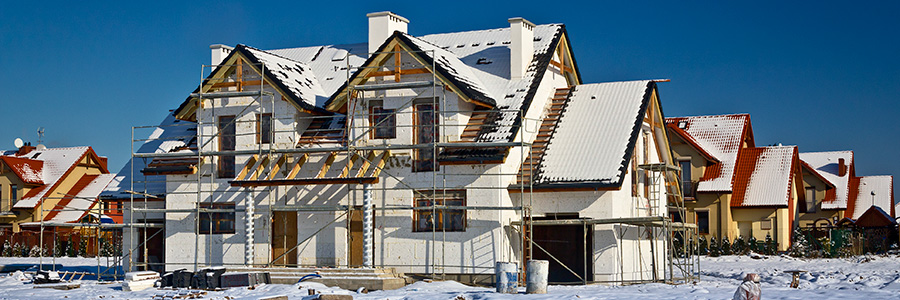
By: Jonathan Simon on February 14th, 2017
Frozen Pipes: What You Need to Know
With the first deep freeze of the winter season, fear of frozen pipes and the associated water damage spikes. In the case of new homes and apartments, these concerns are echoed by builders, plumbing contractors and homeowner associations responsible for the performance and maintenance of these properties.
For builders and contractors however, there are a few simple steps that can be taken during construction to help reduce the risk and ease the worry.
Always plan for cold weather
According to the NOAA, the vast majority of the United States can expect the temperature to drop below freezing at least once a decade, meaning that even if a normal winter season consists of mild weather, the odds are that there will be freezing weather at some point during your initial owners’ occupancy. In fact, research done by the Insurance Institute for Business & Home Safety found that frozen pipes are actually more common in warm weather climates due to bad design and installation practices that leave pipes vulnerable to winter weather.
Avoid installing pipe in uninsulated areas
Many building codes already recommend against or outright prohibit the installation of pipe in uninsulated, but in some regions it may be allowed. Uninsulated areas may include attics, crawlspaces, overhangs or exterior walls, when outside temperatures drop, these areas are the first to get cold and therefore present the biggest risk for frozen pipes. Running pipe in interior, conditioned spaces is always preferred as the air temperature around the pipe will typically be close to the room temperature inside the home.
With slab foundations, install pipes under slab instead of overhead
When dealing with slab foundations, running pipe overhead often requires the installation of pipe in uninsulated areas. By installing piping beneath the slab, the natural geothermal insulation of the ground will typically be adequate to protect against frozen pipes. In addition, running pipes underslab can have other benefits to builders and contractors including faster installations and lower installed costs.
Use appropriate insulation practices
When pipe must be installed in attics, crawlspaces, overhangs or exterior walls, appropriate, compatible insulation must be used. The insulation must be installed so that the pipe sits between the insulation and the interior wall, floor or ceiling. When multiple layers of insulation are used the pipe can be installed between two layers of compatible insulation.
A common mistake made by installers is to place the insulation directly against the interior wall or ceiling, with the pipes sitting outside the insulated space, leaving them vulnerable to freezing temperatures. When pipes are installed in overhangs, take extra care to ensure that all exterior walls and floors are insulated and that the pipe is on the interior of the structure relative to the insulation. For added protection, tubing insulation can be used, always confirm the compatibility of the tubing insulation with the pipes used.
Seal all exterior wall penetrations
Holes or gaps in exterior walls, such as those for cable or electrical penetrations can allow a more direct path for cold air to reach pipes. Research has shown that the mechanics of freezing pipes can be accelerated by the “wind chill” effect, when cold air flows across the pipes. Sealing exterior penetrations and gaps can help prevent cold air from flowing around the pipes.
It’s also important to remember that all pipe materials are vulnerable to freezing and all pipe and fitting materials can leak after a frozen pipe event. Research done by the National Renewable Energy Laboratory found that even PEX piping can burst when installed in short segments, or subjected to non-uniform freezing.
Overall, frozen pipes account for less than 20% of piping system failures, material failures such chlorine degradation are a much more common cause of problems for homeowners. However, frozen pipes are a predictable and preventable problem that builders and contractors can control through following simple best practices.



